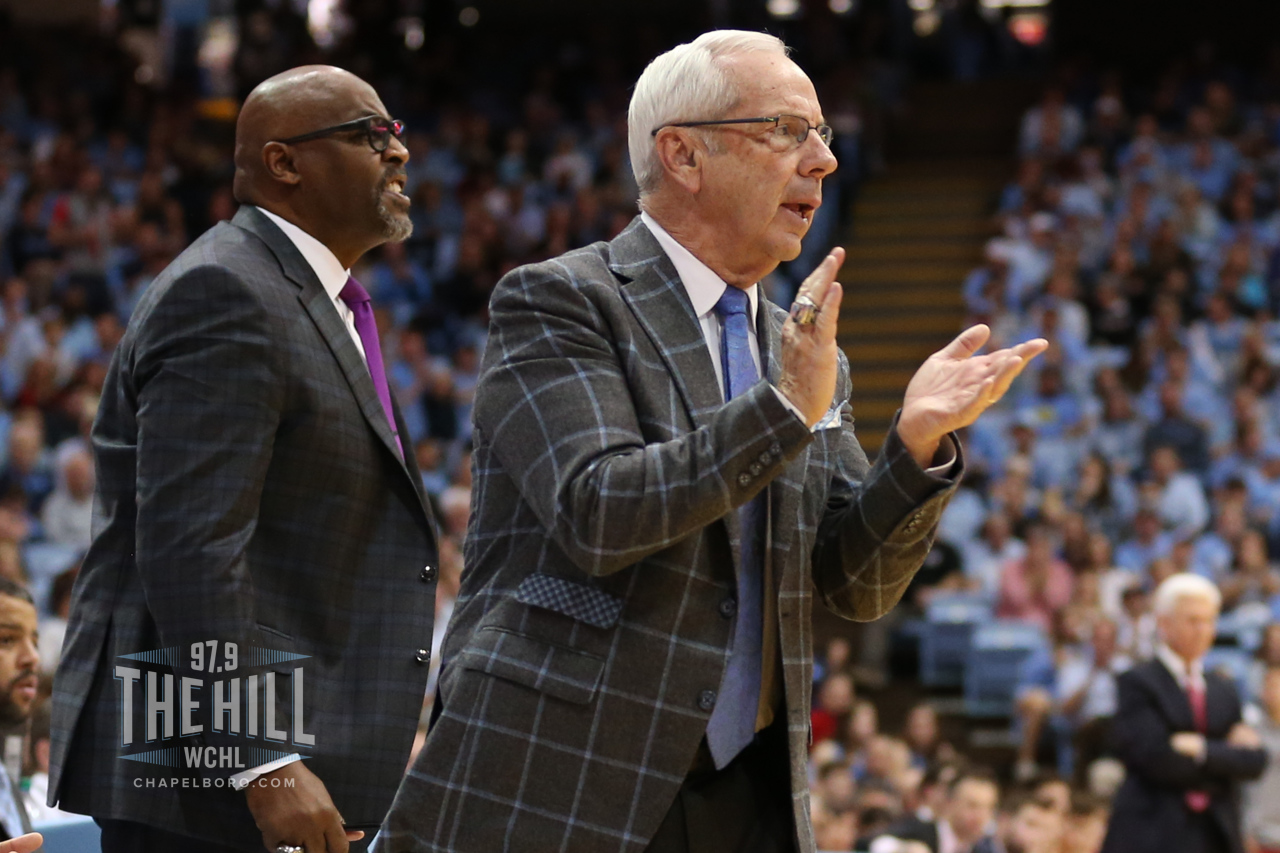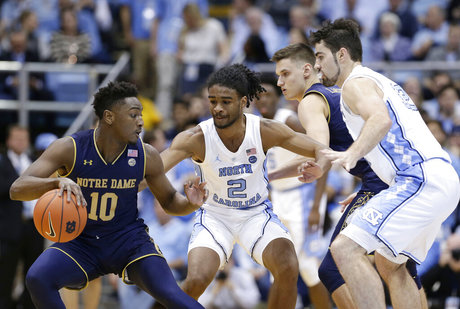Does it beguile you, bemuse you or just plain bug you that Carolina plays six ACC opponents only once each season and the other five twice?
And while the Tar Heels hosted Georgia Tech Sunday night and visit Wake Forest tonight, they won’t get a chance to face those second-division teams again while others in the ACC can feast home and home on the have-nots.
You are right if you think there has been nothing equitable about the ACC basketball schedule since the 2003-2004 school year — Roy Williams’ first as head coach at Carolina – the last time conference schools played each other twice in basketball and once in football during the regular season.
Since then, after Miami, Virginia Tech and eventually Boston College joined, the 12-school ACC stayed with a 16-game basketball schedule through a rotational system that drives most fans crazy because (except for the two Duke-Carolina clashes) no one is quite sure who plays who each season until the schedule comes out.
If you are interested, and I cannot blame you if you’re not, here is how it works.
There are four basic elements to the ACC basketball schedule.
- Every school has two primary partners that it plays faithfully, home and home, each season (for UNC, it is always Duke and N .C. State), 4 games.
- Every school has three other home-and-home partners in a three-year rotation (Carolina has Maryland-Miami-Virginia this season), 6 games.
- Every school plays three of the remaining six ACC teams on the road only (this season, the Tar Heels visit Florida State, Virginia Tech and Wake Forest without facing them at the Smith Center), 3 games.
- Every school plays the other three ACC teams at home only (for UNC, it is BC, Clemson and Georgia Tech), 3 games.
The late Fred Barakat, assistant ACC commissioner who helped come up with the formula, called it a 1-3-1 format (maybe because that was the zone defense he favored at Fairfield before getting fired and moving into administration).
What Barakat meant by that was, the two primary partners aside, every school’s three-year rotation pitted opponents home-and-home one year, only on the road one year and only at home one year. Still not sure why he called it a 1-3-1.
(Now you know why the Tar Heels don’t get a chance to continue their undefeated skunking of Clemson in Chapel Hill every season.)
Barakat delighted in asking people if they understood how the new schedule worked, because he knew most of them did not know or really care once the old full round-robin went the way of expansion.
Basically, your two primary partners never change, although with Gary Williams’ retirement and the once-bitter games against Maryland beginning to peter out Dukies are wondering why the Terps continue to be their second primary partner. Why not N.C. State or Wake Forest, their natural, geographic and old Big Four foes? More on that later.
Since it is a three-year rotation, Carolina has the exact same conference schedule it had in 2009, the last time the Tar Heels won the national championship. They get Maryland, Miami, and Virginia home and home; play single road games at Florida State, Virginia Tech and Wake Forest; and have single home games against BC, Clemson and Georgia Tech.
In 2009, by the way, Carolina finished first in the ACC with a 13-3 record, the losses coming at Boston College, Wake Forest and Maryland. The Heels did not lose at Duke, finishing off four straight wins at “Hansbrough Indoor Stadium.”
There are subtleties to the schedule, which the expansion schools insisted upon when they joined the league; like they did not want to get caught playing single road games at Duke and UNC in the same season. Can you blame them?
So the three “single game” opponents that visit Chapel Hill this season do not have to go to Durham, as well. Georgia Tech, Clemson and Boston College get to play the Blue Devils at home, if that matters since the Dukies have already dispatched the first two at their gyms and will blow hapless BC off Chestnut Hill on February 19.
Even though expansion came for football reasons (and somehow made the conference weaker in both sports), the new schools were scared to death that the Big Four basketball rivals would retain so much of their old magic that they would run away from the rest of the league. They were half right – since the only games that seem to really matter are Duke vs. Carolina.
ACC Basketball, as we once knew it, gave the conference so much panache that other schools wanted to join. But, along with football expansion, the ACC killed the golden goose that made it so special in the first place.
Coaches care more about winning than they do about bad games and bad crowds, since a 22-game round robin would mean that six cupcakes would have to come off the schedule in November and December and play conference games instead.
Now the ACC is like every other – a group of teams that try to beat each other once or twice, not for pride as much as to pile up victories and build an RPI so they can get invited (and a high seeded) to the NCAA Tournament.
It seems to be working regularly for only two, the rivalry that has endured through the funky 1-3-1 format that so few care to comprehend.




